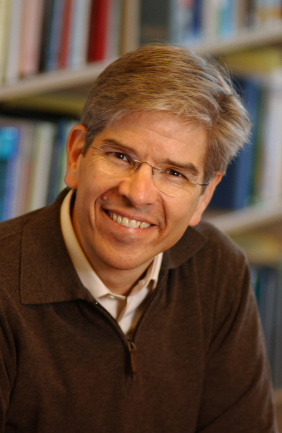At last — Paul Romer got his ‘Nobel prize’ Among Swedish economists, Paul Romer has for many years been the favourite candidate for receiving the ‘Nobel Prize’ in economics. This year the prediction turned out right. Romer got the prize (together with William Nordhaus). The ‘Nobel prize’ in economics has almost exclusively gone to mainstream economists, and most often to Chicago economists. So how refreshing it is that we for once have a winner who has been brave enough to openly criticize the ‘post-real’ things that emanate from the Chicago ivory tower! Adam Smith once wrote that a really good explanation is “practically seamless.” Is there any such theory within one of the most important fields of social sciences — economic growth? Paul Romer‘s theory
Topics:
Lars Pålsson Syll considers the following as important: Economics
This could be interesting, too:
Lars Pålsson Syll writes Schuldenbremse bye bye
Lars Pålsson Syll writes What’s wrong with economics — a primer
Lars Pålsson Syll writes Krigskeynesianismens återkomst
Lars Pålsson Syll writes Finding Eigenvalues and Eigenvectors (student stuff)
At last — Paul Romer got his ‘Nobel prize’
Among Swedish economists, Paul Romer has for many years been the favourite candidate for receiving the ‘Nobel Prize’ in economics. This year the prediction turned out right. Romer got the prize (together with William Nordhaus).
The ‘Nobel prize’ in economics has almost exclusively gone to mainstream economists, and most often to Chicago economists. So how refreshing it is that we for once have a winner who has been brave enough to openly criticize the ‘post-real’ things that emanate from the Chicago ivory tower!
Adam Smith once wrote that a really good explanation is “practically seamless.”
Is there any such theory within one of the most important fields of social sciences — economic growth?
 Paul Romer‘s theory presented in Endogenous Technological Change (1990) – where knowledge is made the most important driving force of growth – is probably as close as we get.
Paul Romer‘s theory presented in Endogenous Technological Change (1990) – where knowledge is made the most important driving force of growth – is probably as close as we get.
Knowledge – or ideas – are according to Romer the locomotive of growth. But as Allyn Young, Piero Sraffa and others had shown already in the 1920s, knowledge is also something that has to do with increasing returns to scale and therefore not really compatible with neoclassical economics with its emphasis on decreasing returns to scale.
Increasing returns generated by nonrivalry between ideas is simply not compatible with pure competition and the simplistic invisible hand dogma. That is probably also the reason why neoclassical economists have been so reluctant to embrace the theory whole-heartedly.
Neoclassical economics has tried to save itself by more or less substituting human capital for knowledge/ideas. But Romer’s pathbreaking ideas should not be confused with human capital. Although some have problems with the distinction between ideas and human capital in modern endogenous growth theory, this passage from Romer’s article The New Kaldor Facts: Ideas, Institutions, Population, and Human Capital gives a succinct and accessible account of the difference:
Of the three state variables that we endogenize, ideas have been the hardest to bring into the applied general equilibrium structure. The difficulty arises because of the defining characteristic of an idea, that it is a pure nonrival good. A given idea is not scarce in the same way that land or capital or other objects are scarce; instead, an idea can be used by any number of people simultaneously without congestion or depletion.
Because they are nonrival goods, ideas force two distinct changes in our thinking about growth, changes that are sometimes conflated but are logically distinct. Ideas introduce scale effects. They also change the feasible and optimal economic institutions. The institutional implications have attracted more attention but the scale effects are more important for understanding the big sweep of human history.
The distinction between rival and nonrival goods is easy to blur at the aggregate level but inescapable in any microeconomic setting. Picture, for example, a house that is under construction. The land on which it sits, capital in the form of a measuring tape, and the human capital of the carpenter are all rival goods. They can be used to build this house but not simultaneously any other. Contrast this with the Pythagorean Theorem, which the carpenter uses implicitly by constructing a triangle with sides in the proportions of 3, 4 and 5. This idea is nonrival. Every carpenter in the world can use it at the same time to create a right angle.
Of course, human capital and ideas are tightly linked in production and use. Just as capital produces output and forgone output can be used to produce capital, human capital produces ideas and ideas are used in the educational process to produce human capital. Yet ideas and human capital are fundamentally distinct. At the micro level, human capital in our triangle example literally consists of new connections between neurons in a carpenter’s head, a rival good. The 3-4-5 triangle is the nonrival idea. At the macro level, one cannot state the assertion that skill-biased technical change is increasing the demand for education without distinguishing between ideas and human capital.
Paul’s idea about ideas is well worth a ‘Nobel Prize.’ Congratulations Paul!
